Concrete Flatwork Best Practices for Installation and Repairs
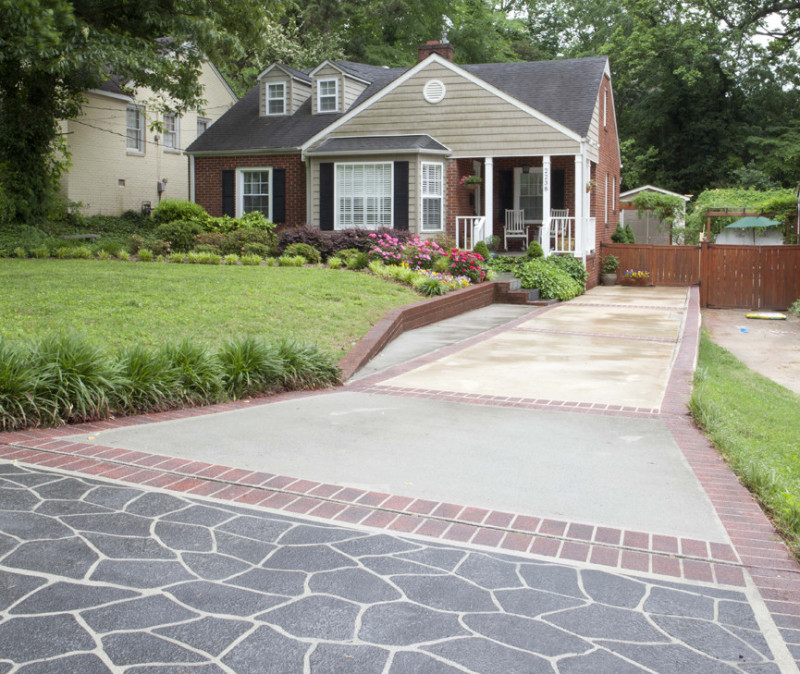 One of today’s top building materials, concrete is versatile, durable, and affordable. But you need to handle it right. Find out the best practices for installation and repair of concrete flatwork, in this chat with Sakrete’s Cory Olson.
One of today’s top building materials, concrete is versatile, durable, and affordable. But you need to handle it right. Find out the best practices for installation and repair of concrete flatwork, in this chat with Sakrete’s Cory Olson.
What is Concrete Flatwork?
The defining feature of concrete flatwork is that it’s horizontal to the earth’s topography. (It isn’t always truly flat, due to land slopes and the need for directing water runoff.) Common concrete flatwork projects are driveways, sidewalks, patios, and outdoor living spaces.
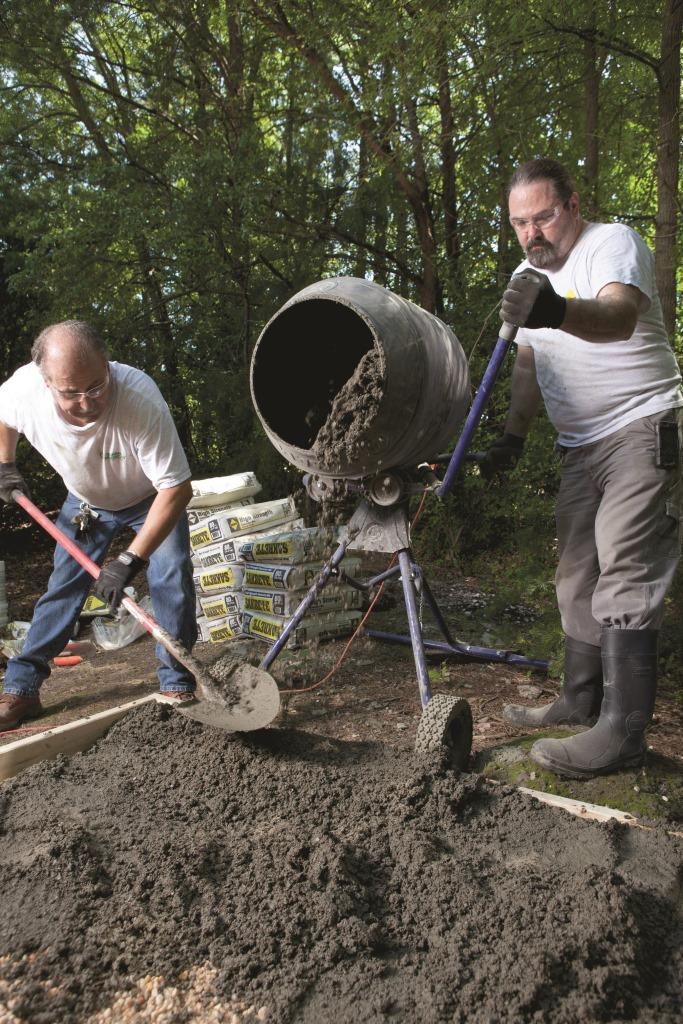
Install a Concrete Slab
To successfully install a concrete slab, first and foremost do your prep right. Excavate 8-10 inches minimum. Add a layer of impacted gravel in a 1:1 ratio (think 4 inches of gravel for 4”-thick concrete) for water drainage under the slab.
Apply at least 4 inches of concrete, depending on what will go on top. For example, driveways need a thicker slab, to handle vehicular traffic, than a sidewalk. Point loads require footings for support -- inquire with your local building authority regarding size requirements. Ensure the concrete is formed up, providing slope to an area where water can escape. Check your regional building code; however, the rule of thumb is ¼” pitch per foot.
For a DIY concrete driveway, cut expansion joints every 8-12 feet in either direction allowing for movement to help prevent cracking.
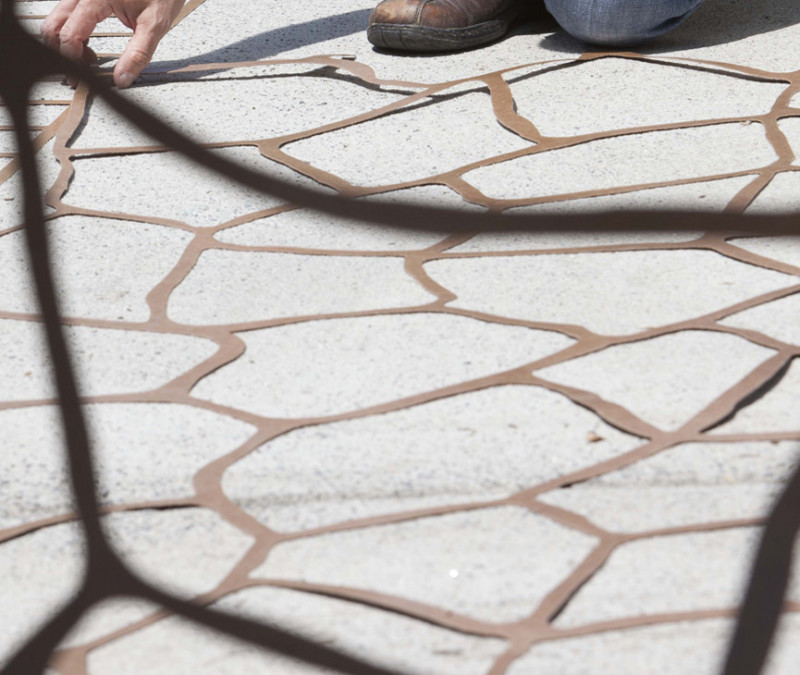
Color and/or Stencil Concrete Flatwork
Sakrete Flo-Coat™ Resurfacer bonds very well to existing concrete and can be used in a thickness of only 1/8-1/4 inch. Flo-Coat can also be spray-applied for stenciling using a hopper gun.
Add color to the mix prior to stenciling. This helps make the concrete resemble your desired material – perhaps brick or natural stone. Choose from earth tones such as black, brown, buff, red, or terracotta.
You can even cover up your concrete stencil with a new design if you want someday … as long as the original stenciling wasn’t done with an epoxy coat or sealed (this would have to be removed before applying new material). Proper preparation of the existing concrete surface is critical to ensure a good bond.
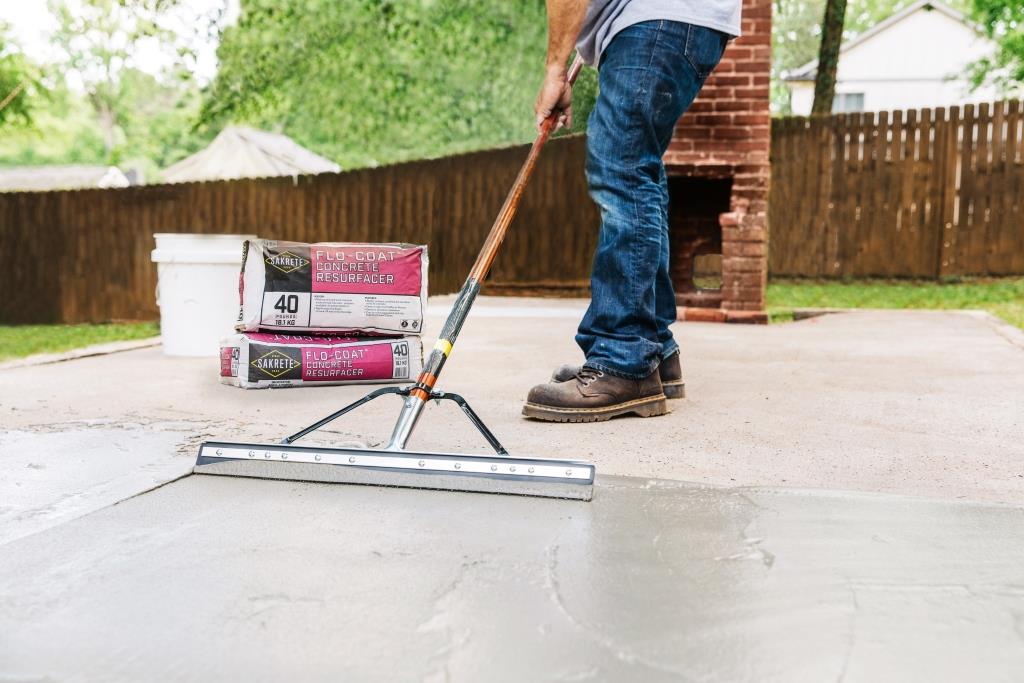
Resurface Worn or Damaged Concrete
Prepare existing concrete by removing all unsound concrete, grease, oil, paint, sealers, and other foreign material that will inhibit adhesion and performance. Slick or sealed surfaces must be thoroughly roughened.
Enhance adhesion with a bonder/fortifier. Brush or roll on, or add in as you mix the dry concrete, replacing 50 percent of the water. Several products already contain a bonder/fortifier.
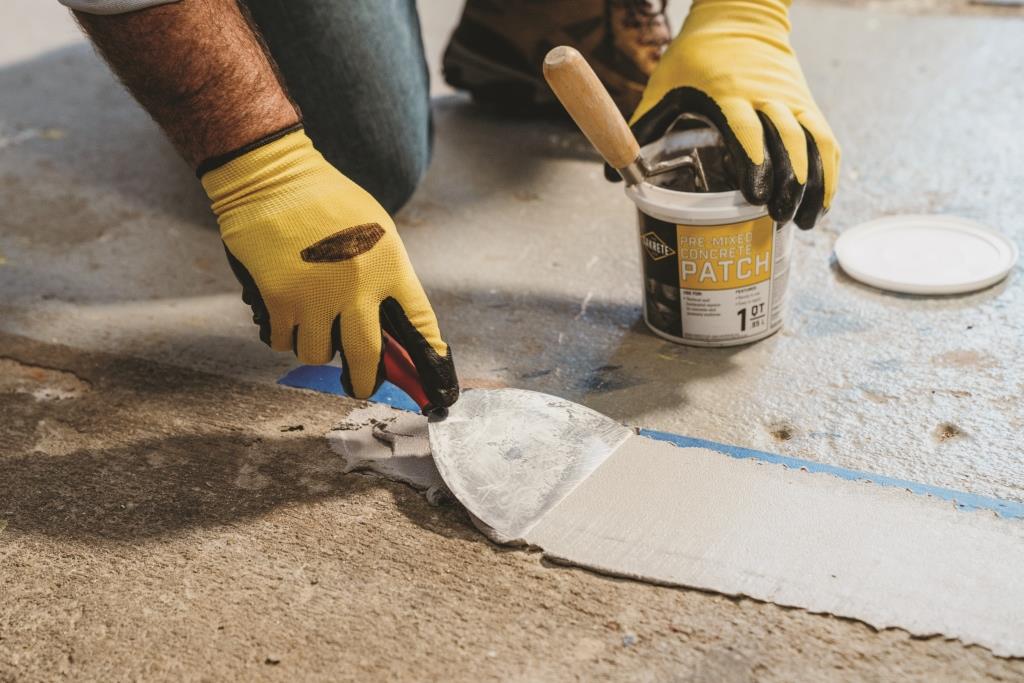
Fill Horizontal Cracks in Concrete
Fill cracks on concrete flatwork using self-leveling urethane sealant, simple to apply with a caulking gun. This type of sealant, good for cracks anywhere from ¼ to 3/8” on horizontal surfaces, expands and contracts with the weather, much the same as caulk.
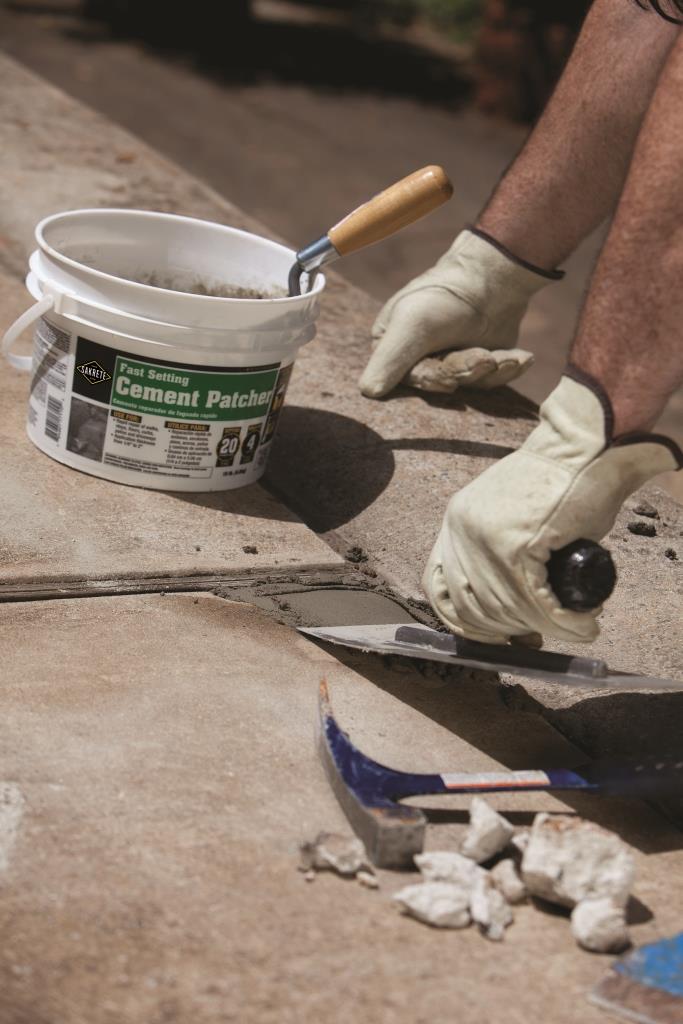
Repair Broken Concrete Corners or Curbs
Fast-setting patcher, which sets in 15 minutes, is excellent for uncomplicated patching of corners or curbs. It allows you to form points and curves with your trowel -- perhaps on the rounded part of a stair -- and won’t slop away from you like regular concrete mix with an initial set time of 8 hours.
Expert Guidelines for Concrete Flatwork
- Use appropriate safety equipment, including gloves and eye protection.
- Ensure your surface is clean, sound, and properly profiled when going over existing concrete.
- Mist existing concrete with a spray bottle before applying patcher or resurfacer to avoid a bad concrete job. Moistening boosts bond strength and counteracts the old dry concrete’s tendency to draw water out of the new product. This reduces risk of drying too quickly, resulting in cracking.
- Don’t put a BAND-AID TM over badly damaged or structurally unsound concrete … you’ll just get cracks or bond failures in the same spot. You would be better off cutting out damaged portions of a driveway, for instance, and applying new 4” thick concrete.
- Consider project size before you DIY. Homeowners can handle many household repairs using specialty products, available in easy-to-handle 10 or 20-pound pails. For larger jobs, you probably won’t have all the tools -- and by the time you’ve lifted thirty or forty 80-pound bags, you’ll get awfully tired! Your back is hurting and you’re probably thinking, “why didn’t I find concrete contractors near me to handle this?” and you wouldn’t be wrong. For assistance on renovations and major countertop overlay or slab installations, Networx has the right contractor for you.
Laura Firszt writes for networx.com.
Looking for a Pro? Call us (866) 441-6648

Concrete Average Costs
Concrete Contractors Experiences

I Built A Concrete Retaining Wall As A Defense Against El Nino

A Simple HVAC Repair Stopped Our Air Conditioner Blowing Hot Air



